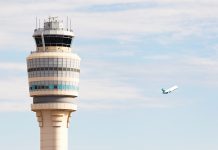 Ask Atlanta is a regular column where we answer your questions about life in ATL—our infrastructure, our politics, our history and culture, and much more. Have a question? Ask us here!
Ask Atlanta is a regular column where we answer your questions about life in ATL—our infrastructure, our politics, our history and culture, and much more. Have a question? Ask us here!
Question: Who trains the MARTA bus drivers? I am amazed with the maneuvering of the large buses on the narrow streets around Atlanta. —Beth
Answer: The next time you watch a MARTA bus driver make a squeaky-tight turn with ease, you can thank Howard Harris, who teaches novices to navigate Atlanta’s labyrinthine streets. Harris heads behind-the-wheel instruction for MARTA’s Operator Candidate Training Program, a 15-instructor team that graduates about 200 new operators a year. “We can teach anybody how to drive this bus,” said Harris on a recent visit to MARTA’s bus training depot in Decatur.
MARTA’s program—which covers everything from engine mechanics to passenger de-escalation—takes 12 weeks for drivers who enter with a regular driver’s license, or eight for those with a commercial license. Applicants must be at least 18 years old, have a clean driving record, and pass a fitness test. After classroom instruction, trainees start driving by dodging cones in the parking lot behind the training center—usually in an old Gillig bus retired from the fleet. “I’m not going to put you in a million-dollar bus on your first day,” Harris said, pointing to a gleaming New Flyer Excelsior, a fully electric model MARTA introduced in 2022. “We’re going to build up some trust first.”
Harris, who previously trained bus drivers in Dallas, credits experienced MARTA operators with helping him demystify Atlanta’s roadways, which range from dizzyingly wide megalanes to perilously tight one-way corridors—often along the same route. One crucial tool in the driver’s toolbox: the L-turn, in which the operator turns the bus at an exact 90-degree angle. To execute it, Harris explained, you line up your shoulder with the spot where you want the bus to end up. “Every street you go on is different,” he said. “But if you do the same process every time, you’ll be able make it.”
The vehicles are designed to help: The wheel axles are set deep under the bus, leaving considerable space at the front and back, and the carriage is built high enough to pass over curbs when a corner is tight. But mistakes happen. On a demonstration drive around Decatur, Harris pointed to a curb blackened with tire marks, the victim of poorly executed L-turns. At MARTA, touching a curb with a tire must be reported as an accident; afterward, drivers are sent to retraining, where they’ll review the incident and practice their maneuvers.
Tight turns aren’t Atlanta traffic’s only headache, of course. You also have to know where to go: MARTA plans to install GPS systems but hasn’t yet. Instead, operators use turn-by-turns, special maps that show them their route. Harris encourages novice drivers to ride the route with a more experienced operator before their shift: “You can drive it in a car,” he said, “but you won’t know the inconsistencies of that route, like a tree in front of a sign, or no sign at all.” Another occasional roadblock: film sets, which disrupt traffic flows and turn whole blocks into unrecognizable foreign landscapes. Operators know to look for the yellow signs with black text that signal filming in the area and may require a reroute. MARTA’s Bus Communications Center has a tracker on each bus and can help the driver find a different way; the bus, of course, still has to arrive, on time, at every stop on the route.
Despite those challenges—or perhaps because of them—MARTA operators are known in the transportation industry for their safety and skill. Atlanta even has a distinguished record at the national bus rodeo, a competition that is precisely what you think it is. Rick James, who runs recertification for the program, had a long career driving buses in New York City before joining MARTA. Even he was amazed by Atlanta’s nimble operators. “We used to wonder why MARTA was always getting the safety awards, always winning the rodeos,” he said. “When I came down here, I found out why: They’re driving into the neighborhoods, making these tight turns—they’re already in the rodeo!”
Reporting by Rachel Garbus
This article appears in our January 2023 issue.














